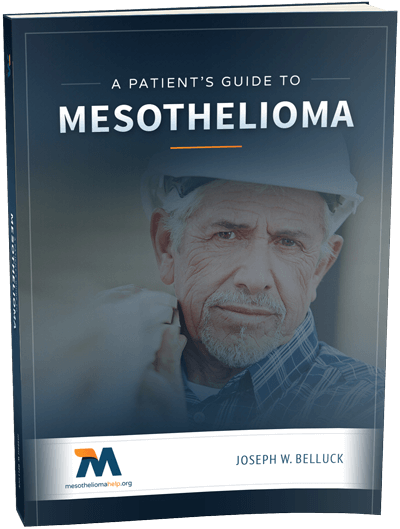Mesothelioma Help Cancer News

Be Educated About Mesothelioma at Rare Disease Day
February 29 was rare disease day, a day to recognize and remember all those who have been afflicted with these illnesses and to pray for a cure. Mesothelioma is one of the nearly 7,000 diseases in the United States that is considered “rare;” however, to someone dealing with the effects of mesothelioma, there is no rarity to it at all.
Since mesothelioma is such a rare disease, it is understandable, but not acceptable, that the general public knows so little about it. I include myself in this lot, as I did not even realize that it was a form of cancer when my father was diagnosed. I find myself thinking about all of the missed opportunities to educate people on what meso really is instead of just those television advertisements.
Now is the perfect time to take a stand for this community. With faith, education, research, and fundraising, we can help take mesothelioma from being classified as a rare disease to an eradicated disease.
Contact your state and local representatives and ask them to push for legislation for more funding for mesothelioma research. Let them know that there are faces to this awful disease and that there is more to us than what may meet the eye. We may be a group that came together from something uncommon, but there is definite strength in our assembly.
Know more about Mesothelioma and how you can deal with it.

Early Detection Tool for Mesothelioma On the Horizon
Each year, thousands of people in the U.S. and across the world are faced with a diagnosis of mesothelioma. The deadly, aggressive cancer, caused by past asbestos exposure, hibernates for decades before life-threatening symptoms become apparent. The key to increased life expectancy when battling this cancer is early detection. A reliable diagnostic tool, however, has been elusive to researchers until now. In a recent study, researchers report “exciting results” in detecting a protein indicating the presence of malignant mesothelioma.
MorNuCo Laboratories of Indiana, announced last month that with its ONCOblot® Test a team of researchers conducted a retrospective clinical trial where a mesothelioma-specific form of the ENOX2 protein “was found within the serum of asbestos-exposed individuals an average of 6.2 years in advance of clinical symptoms.”
“The completion of this trial is an exciting new chapter for our work,” says Nick Miner, Vice President of Business Development, in the company’s Feb. 4 press release. “Although asbestos-induced mesothelioma is a very specific example of early detection, we are currently pursuing larger-scale clinical trials to investigate the utility of the ENOX2 protein marker to predict the onset of cancers of other tissues of origin as well.”
Although the American Cancer Society identifies chest x-rays, CT scans, PET scans and the bronchoscopy as tests used to diagnose mesothelioma, these are only effective after a patient has presented with worsening respiratory symptoms. MorNuCo’s goal with ONCOblot, is to offer a tool that can detect the cancer early, “before the disease progresses and to begin treatment well in advance of life-threatening symptoms.”
Mesothelioma often has symptoms such as a persistent cough, shortness of breath, fatigue and wheezing, that are similar to many other respiratory illnesses. When a patient presents with these symptoms, doctors often first treat the patient for a respiratory infection before turning to testing for cancer. Stopping tumor growth and preventing metastasis is especially critical for mesothelioma and lung cancer where the diseases are highly aggressive. This can only be achieved if the cancer is detected early.
“The results of this study showed that two mesothelioma-specific ENOX2 protein transcript variants were detected in the serum of asbestos-exposed individuals 4–10 years prior to clinical diagnosis of malignant mesothelioma, an exciting sign of progress in the cancer detection field,” according to the press release.
The study can be found in the Jan. 22 issue of Clinical Proteomics Journal.
Note: Physicians can order the ONCOblot® Test, however, it has not yet been approved by the U.S. Food and Drug Administration. The test is CLIA Certified (Clinical Laboratory Improvement Amendments) and CAP Accredited (College of American Pathologists). The cost of the test is not covered under insurance.
For more information see the FAQs on Oncoblot’s website.

The Uncertainties of a Mesothelioma Diagnosis
Receiving a mesothelioma diagnosis, for some patients, is like having a bomb explode in their life. It is unexpected, unwanted, and destroys the way their life had been going. It also wipes out any future plans they may have had.
Recently, this point was made by clear to me by a couple, when the husband was diagnosed with mesothelioma. He explained that his new world, the mesothelioma world, is like being on another planet. His sense of community is different, the language is different, terms he had never heard before are now too much a part of his vocabulary. And his friends and family cannot really help them.
As I listened to the couple talk about their experience with mesothelioma, they spoke about what their journey had been, and where they thought it might go. They were unsure of what was really in store for them. They are an open-minded couple, but the fear of the unknown makes everything hard to plan for. Not knowing what to expect, or how the man would react to treatment was overwhelming.
He was considering participating in a clinical trial, but their list of questions was growing. What does that clinical trial involve? Will insurance pay for it? How much travel would be required? What are the unforeseen expenses? And most importantly, what will it do to him physically?
Some of these questions can be easily answered. The questions regarding the specifics of the clinical trial, like expenses and travel, can be easily answered by the team conducting the trial. But how his journey would go, how he would react to treatment are questions no one can answer for them.
Emotionally it’s hard to keep up a positive attitude and mental fight when there are so many uncertainties. As the two sit and wait, we concentrate on those things that are in their control. For example, nutrition.
They can work hard to increase their focus on eating good, solid food to maintain the man’s weight. Another area that they could work on is exercise. Walking and moving around is a great tool for keeping up energy levels during treatments. Sleep hygiene was another area that he can focus on. They can also look into some mind-body exercises such as meditation, and alternative medicine like acupuncture or Reiki. When things seem out of control it can be encouraging to spend time exploring those options that can be controlled, if just a little.
Every journey begins with one step. It is hard to be on the mesothelioma journey, but it is important to work through the experience, and to reach out to friends and family and your medical team to find the support to help manage the experience.
If you have any questions regarding any aspect of your mesothelioma treatment, feel free to email me at [email protected].

Ease Up On Aggressive Mesothelioma Treatments To Prolong Lives
Just last month, MesotheliomaHelp wrote about how the toxicity of cancer treatments, that kill many healthy cells, may open up new pathways for tumors allowing them to grow and spread. Now, another team of researchers support taking a less aggressive “kill all” approach to prevent the inevitable outcome of treatment resistance.
Researchers at Moffitt Cancer Center in Tampa, Florida, led by Robert Gatenby, M.D., study author and leader of the Cancer Biology & Evolution Program at Moffitt, want to attack cancer with adaptive therapy, which focuses on keeping resistant cells in check by maintaining an army of chemo-sensitive cells alive.
According to a Feb. 24 press release from the cancer center, bombarding cancer with the highest tolerated dose of chemotherapy, the typical approach, may effectively kill cancer cells in the short-term, but chemo-resistant cells escape the treatment and continue to grow and spread.
The old school approach to treatment, especially for mesothelioma, an incurable asbestos-caused cancer, is to take an aggressive approach in fighting the equally aggressive cancer. According to the researchers, however, by giving a lower dose of the chosen chemotherapy and keeping some chemo-sensitive cells intact, they can compete with the resistant cells and stop them from taking over.
“The goal is to enhance the value of therapy by using evolution in our favour rather than letting it beat us,” says Dr. Granby.
The approach, says Dr. Gatenby, adjusts treatment based on the size of the tumors and involves blasting the tumor with a high dose during its growth phase, then reducing the dosage as the tumor shrinks. Through this process, the patient maintains a higher quality of life with the lower toxicity levels, and the cancer is held at bay.
“Our goal is to keep playing this game with the tumour to keep it sensitive, and as long as we do that the patient is alive and fine,” says Granby in a Feb. 24 article in New Scientist. “Then they can have prolonged periods of time when they’re not getting any therapy at all.”
If the cancer recurs, another round of treatment again kills off the bulk of the cancer cells, but allows the patient to maintain a good quality of life. When tested on mice, this approach kept tumors small for much longer, “and after the initial 20 days only low doses were needed to prevent the tumours growing larger.” In addition, “therapy was stopped completely for 60 per cent of the animals, without the cancer progressing.”
The standard treatment protocol for mesothelioma patients is chemotherapy. However, the high doses often leave patients in fragile health from side effects including diarrhea, vomiting and anemia. Any treatment that improves quality of life and extends survival is a welcome approach.
Mesothelioma is responsible for the death of nearly 3,000 Americans each year.
The study can be found in the Feb. 24 issue of Science Translational Medicine.
http://stm.sciencemag.org/content/7/284/284ra57
Sources:
- Cancer Center
https://www.moffitt.org/newsroom/press-release-archive/2016/moffitt-researchers-develop-a-novel-cancer-treatment-approach-based-on-evolutionary-principals-to-inhibit-chemo-resistance-prolong-progression-free-survival - (Feb. 24 article in) New Scientist
https://www.newscientist.com/article/2078806-gentler-attack-on-cancer-may-mean-we-can-live-with-it-for-longer

Groundbreaking Brain Cancer Discovery May Lead To New Mesothelioma Treatment
Glioblastoma, a brain cancer, is highly aggressive and has limited treatment options. Although researchers have been diligent in their work to find a new, effective treatment, there has been no significant breakthrough in treatment for the cancer for decades. Now, researchers believe they may have found a way to turn a patient’s skin cells into cancer killing cells, leading to a “groundbreaking discovery” for brain cancer patients.
Glioblastama is a highly aggressive cancer with cells that quickly reproduce due to the large network of blood vessels found within the brain. Like pleural mesothelioma, the signature cancer of asbestos, glioblastama often has a complex, interwoven growth pattern with finger-like tentacles that spread out causing the boundaries between malignant tissue and healthy tissue to become blurred. Because of this, surgery, often the first course of treatment, leaves cancerous cells behind leading to continued growth and limited survival.
“Patients desperately need a better Standard of Care,” said Shawn Hingtgen, Ph.D., an assistant professor in the UNC Eshelman School of Pharmacy and member of the Lineberger Comprehensive Care Center, who led the study, according to a Feb. 24 press release from University of North Carolina.
http://uncnews.unc.edu/2016/02/24/unc-chapel-hill-researchers-make-groundbreaking-discovery-use-skin-cells-to-kill-cancer/
To achieve this, the researchers report that they found a way to take the patient’s own skin cells and turn them into “cancer-hunting stem cells that destroy brain tumors.” In effect, through a Nobel Prize-winning technique from 2007, the researchers reprogrammed the skin cells to become induced neural stem cells.
These stem cells, according to the researchers, “have an innate ability to move throughout the brain and home in on and kill any remaining cancer cells.” The team also showed that these stem cells could be engineered to produce a tumor-killing protein, increasing the likelihood the cancerous cells will be stopped.
“We wanted to find out if these induced neural stem cells would home in on cancer cells and whether they could be used to deliver a therapeutic agent,” said Dr. Hingten. “This is the first time this direct reprogramming technology has been used to treat cancer.”
In a test on mice, the team was able to increase the survival by as much as 220 percent, depending on the type of tumor. In the short term, the team will turn their focus to human stem cells and assessing anti-cancer drugs that can be loaded into the tumor-seeking neural stem cells.
The team is also focusing on “improving the staying power of stem cells within the surgical cavity.” The work will ensure the stem cells have enough life to seek out the cancer cells.
Breakthrough in any cancer research can translate to hope for the nearly 3,000 Americans diagnosed with the deadly cancer each year. The average survival time for mesothelioma patients is less than a year.
The full study can be found in the Feb. 2 journal Nature Communications.
http://www.nature.com/ncomms/2016/160524/ncomms11734/full/ncomms11734.html
Free Mesothelioma Patient & Treatment Guide
We’d like to offer you our in-depth guide, “A Patient’s Guide to Mesothelioma,” absolutely free of charge.
It contains a wealth of information and resources to help you better understand the condition, choose (and afford) appropriate treatment, and exercise your legal right to compensation.
Download Now